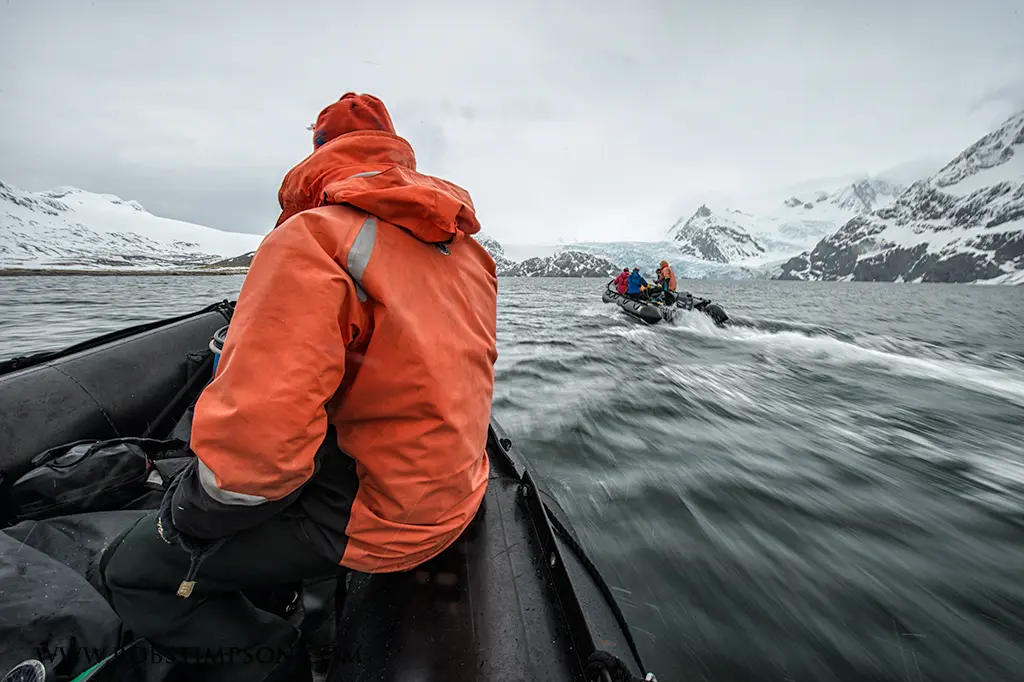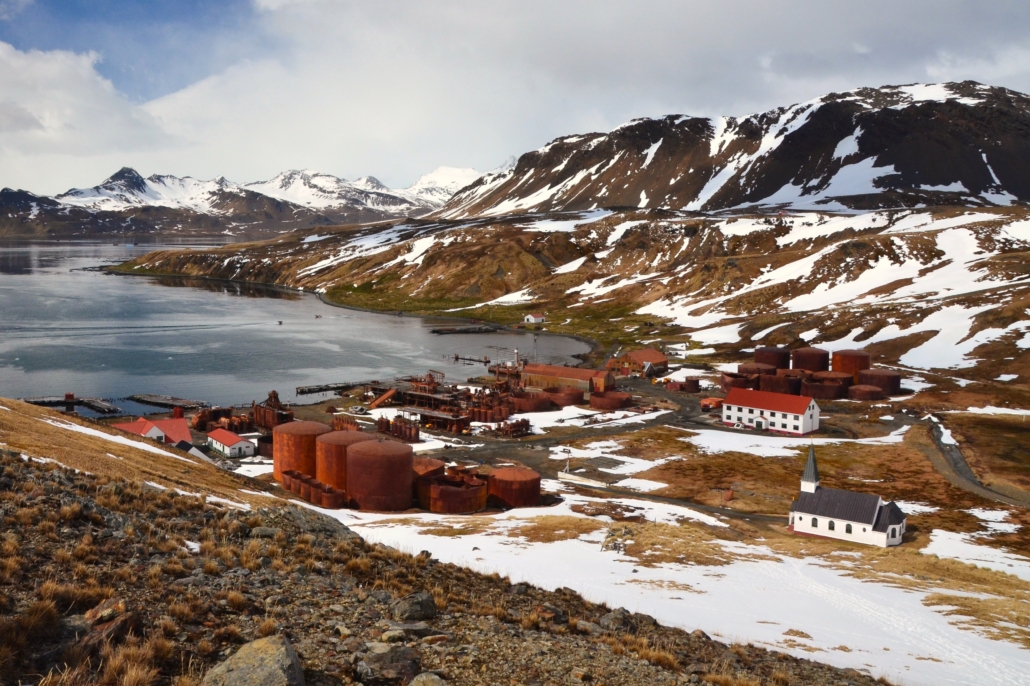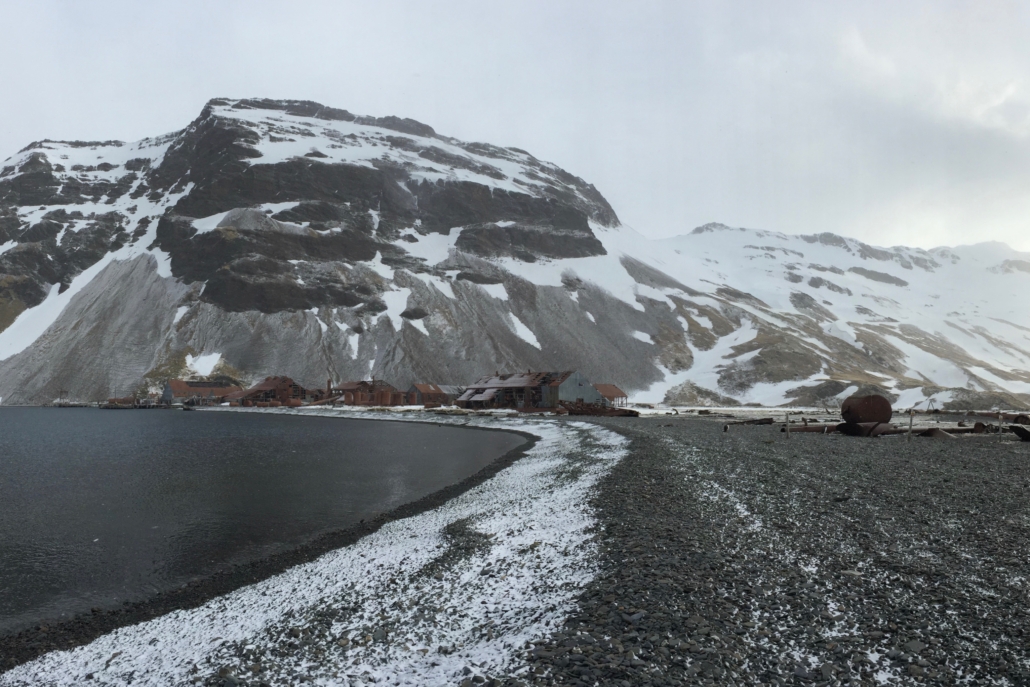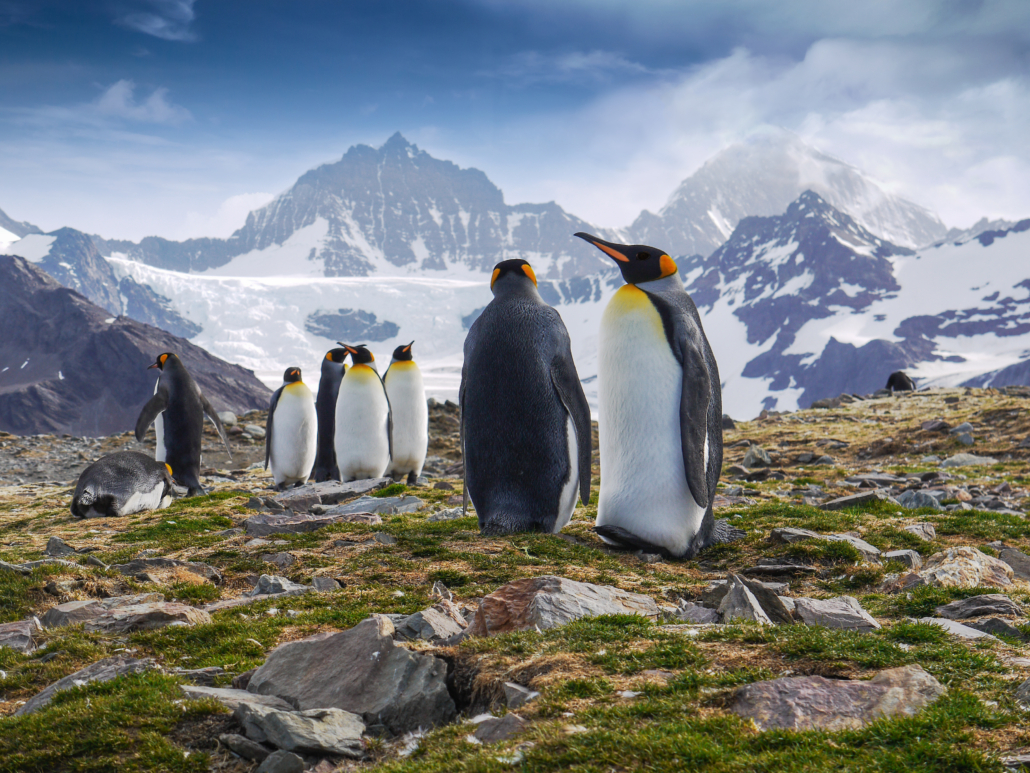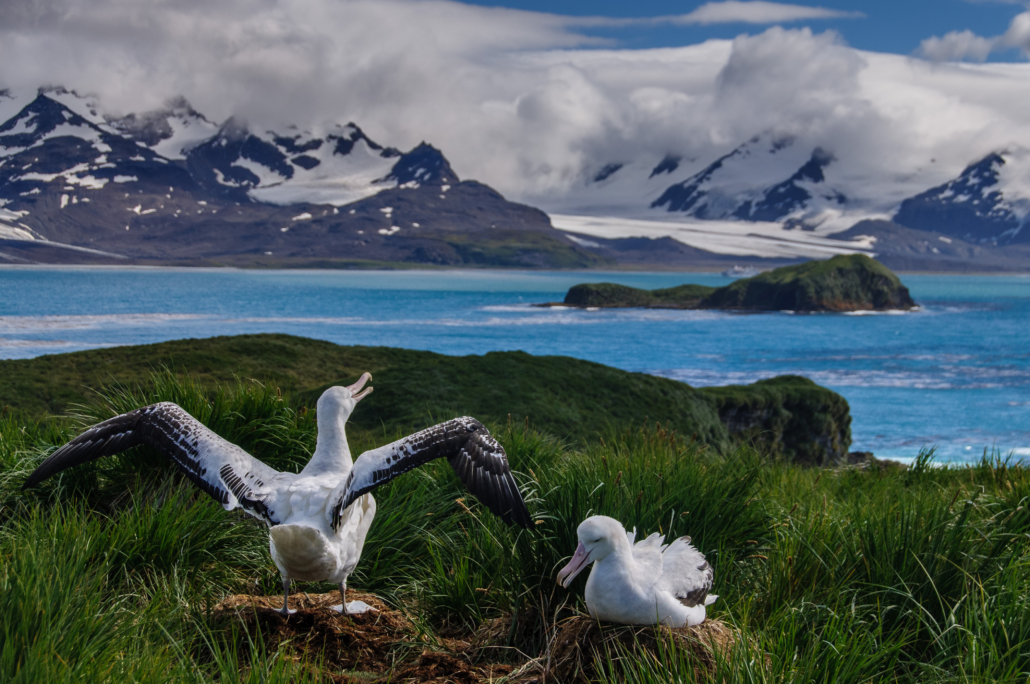What makes this voyage unique is the amount of time we will spend in South Georgia.
Virtually all ship visits spend just three or perhaps four days at most around the island. This expedition is dedicated solely to visiting South Georgia Island and we plan to spend double that amount of time, providing the most comprehensive exploration of the island possible. We also eliminate numerous sea days by flying to and from the Falkland Islands.
In the true spirit of the early explorers, Antarctica21 have agreed to keep a completely flexible 15 day/14 night itinerary and assess conditions daily to take advantage of every opportunity to launch the zodiacs and make shore landings.
Below are some of the unique locations we hope to visit.
South Georgia Heritage Trust
The South Georgia Heritage Trust (SGHT) works to preserve the island’s natural and historical heritage for future generations – to redress past damage to its environment, to protects its wildlife now and in the future, and to preserve the human heritage of the island which so clearly shows the best and worst of humanity. SGHT has a museum located in Grytviken. The collections are owned by the Government of South Georgia and the South Sandwich Island. SGHT also undertakes many projects to protect and preserve the island’s environment and cultural heritage, including eradicating mice and rats and reducing the human footprint on South Georgia.
Inspiring Explorers™ Programme Major Partners
An albatross soars over South Georgia at sunset ©iStock.com
King Haakon Bay
Having completed the 800-mile perilous ocean crossing from Elephant Island after the crushing of their expedition ship, Endurance, the very historic location of King Haakon Bay is where Shackleton and his men made landfall in their small lifeboat, the James Caird before traversing the Island’s harsh landscape to seek help more than a century ago.
This is a very dramatic place, visited by just a handful of ships each season. If conditions allow, we may farewell our Inspiring Explorers™ mountaineering team here as they head towards the Shackleton Gap to attempt the first New Zealand ascent of Mount Worsley.
The team boats into King Haakon Bay in zodiacs ©Rob Stimpson / AHT
Grytviken
The largest of the former whaling stations on South Georgia, a real highlight of our landing here is a visit to the grave site of Sir Ernest Shackleton, who was laid to rest overlooking the entrance to Grytviken Harbour in 1922 on the Quest expedition, officially marking the end of the heroic-era of Antarctic exploration.
Here we pay our respects to Shackleton and his loyal right-hand man, Frank Wild, whose ashes were subsequently interred beside ‘The Boss’. These great explorer legacies live on through the Trust’s mission. Behind the rusting remnants of the old station, the beautifully restored Lutheran church built by the Norwegians is well worth a visit. The small museum is another fascinating spot to spend an hour or two, and there are some good walks to enjoy.
A springtime view from above of Grytviken and the remains of the whaling station including the church, soccer field, storage tanks and other historic buildings in the town on South Georgia. ©iStock.com
Stromness / Fortuna Bay
From 1912 until the 1930s, Stromness (plus nearby Leith and Husvik), operated as whaling stations and the rusted and ghostly remnants of these old stations seem out of place in such a pristine environment.
This area is key to Shackleton’s story of the Endurance expedition and it was here in 1916, that Shackleton and his companions, iconic New Zealand captain Frank Worsley and Tom Crean, arrived after their epic mountain crossing from King Haakon Bay on the south coast. Conditions permitting, there may be an opportunity to hike in Shackleton’s footsteps, experiencing the last few miles over the saddle separating Fortuna Bay from Stromness.
South Georgia © Sinéad Hunt / AHT
St Andrews Bay
Teeming with wildlife, St Andrews Bay is a spectacular place to visit so early in the season, and is best known for its gigantic breeding colony of 150,000 king penguins. It also boasts South Georgia’s largest elephant seal breeding beach, with as many as 6,000 seals at this time of year. This is an excellent place to admire the spectacular mountainous surroundings and the three significant glaciers that hug the beach.
A small group of king penguins in St Andrew’s Bay, South Georgia Island. ©iStock.com
Prion Island
Considered by many as a jewel in the crown, Prion Island has been designated as a ‘Special Protected Area’ by the South Georgia Government due to the breeding wandering albatross colonies found here. Boasting the largest wingspan of any living bird, typically ranging from 2.5 to 3.5m (8ft to 11ft), albatross spend most of their life in flight, landing only to breed and feed. We are lucky to attempt a landing here as the site is closed to visitors between late November and early January due to the concentration of fur seals on the beaches.
A wandering albatross couple, South Georgia Island. ©iStock.com
Gold Harbour / Drygalski Fjord
Lying at the foot of the Salvesen Mountains, Gold Harbour is regarded as the most beautiful place on South Georgia and is so called because the sun’s rays make the cliffs yellow with their light in the morning and evening. It is an exhilarating location with king penguins, gentoos, elephant seals, sooty albatross and hanging glaciers. As we navigate the ship into the still waters of Drygalski Fjord, we are surrounded by towering snow-covered peaks and several substantial glaciers which tumble down into the ice-filled waters.
King Penguins and Elephant Seals – Gold Harbour, South Georgia ©iStock.com
Close up of turquoise colored glacier ice in Drygalski Fjord, South Georgia Island ©iStock.com



